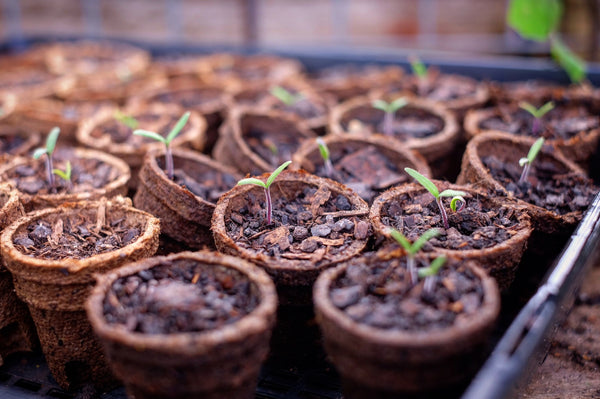Tomato Time: A Guide Planting and Growing
All we are thinking of this time of the year is the tomato. And it’s life partner, basil. We have waited patiently, resisting the luring of fine bursts in the weather, knowing that this is their moment. And we now must embrace it! The rule of thumb for planting tomatoes and basil, in Melbourne, is to wait for Melbourne Cup weekend. It’s known to be the time when spring has finally thrown out its last whimpers of winter, and apart from the erratic shift in wind or a sudden drop in temperature - this is Melbourne after all - longer and harsher spells of dodgy weather are a thing of the past. It is finally safe to nestle your beloved seedlings in the patch. It's also time to propagate heirloom tomato seeds ASAP.

If you’ve been good, there should be an army of seedlings at the ready, having been propagated and nurtured from last season’s seed. Now, as you place them front and centre in the patch’s most sought after real estate, it’s exciting to know you’re evolving stronger, hardier, sexier, better-tasting fruit. All that stuff Darwin used to talk about. The disparity in taste between a home-grown, vine-ripened, heirloom tomato, compared to the mass-farmed, gas-pumped, GM modified version, is exactly why this is the one date on the veggie patch calendar that strikes a common chord. The death of the tomato in the marketplace has been the rebirth of the tomato at home.
When transplanting your tomatoes, don’t be a machine and plant on Melbourne Cup weekend if conditions aren’t favourable. There’s been 14-degree storms and 40-degree stinkers over this time before, so wait for the stars to align. Low 20’s, gentle breeze, nice tunes playing in the background - perfect. Space the tomatoes 30-40cm’s apart - more than necessary in the case that some don’t take - and then scatter your basil seedlings in a circular framework (with a radius of approximately 20cm) around their bases. Academics, governments, and in fact whole generations have been trying to explain the mechanics of this relationship for centuries. Why basil with tomato?! The best they have come up with - it just works.

Of course, you’ve planted your seedlings where broad beans or peas previously laid - giving them a fix of much-needed nitrogen - or if not, integrate a decent amount of compost and pelletised chook poo, and so your main task moving forward is watering. Over the next month they will need next to daily splashes of hydration to keep them on track. This is best done in the morning with a cup of tea in hand. Resist late afternoon sessions that will keep the patch wet at night, leaving them susceptible to pest and disease infestation. The season is already dangerous enough without you adding fuel to the fire.
Staking will be required as your plants grow tall and this is best done early on when the root zones are smaller and easier to work around. While the growing frames will look clumsy alongside the adolescent tomatoes, they will quickly grow up and then everyone’s a winner. Use soft twine when attaching the limbs to the trellis and if it’s in your DNA, pinch the bi-lateral growths tip to help form a stronger plant. And with that, your prized tomatoes are well and truly on their way.

If you’re yet to find the time or energy for the spring plant out, now is not too late. In fact, you’re right in the zone, do please plant away. Remember - what you put in now will proportionately impact on the output come summer harvesting, so dig in a little to dig out a lot more come business time.
-
Posted in
tomatoes

